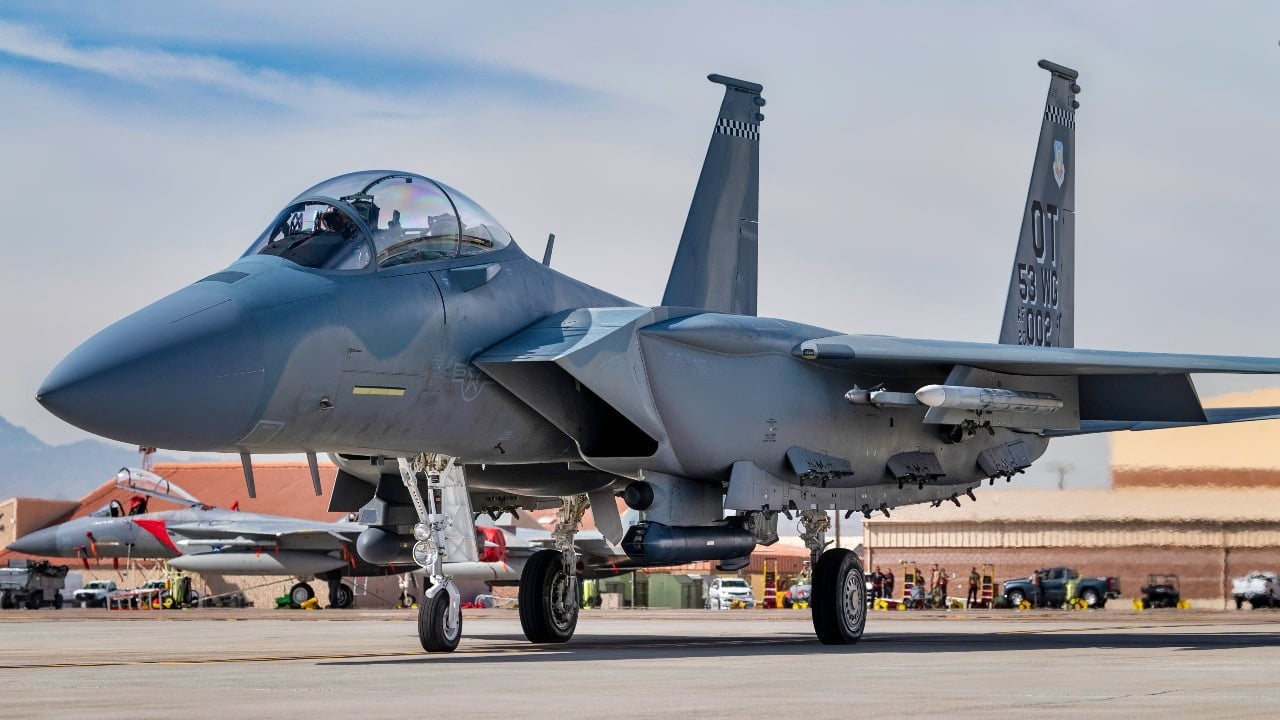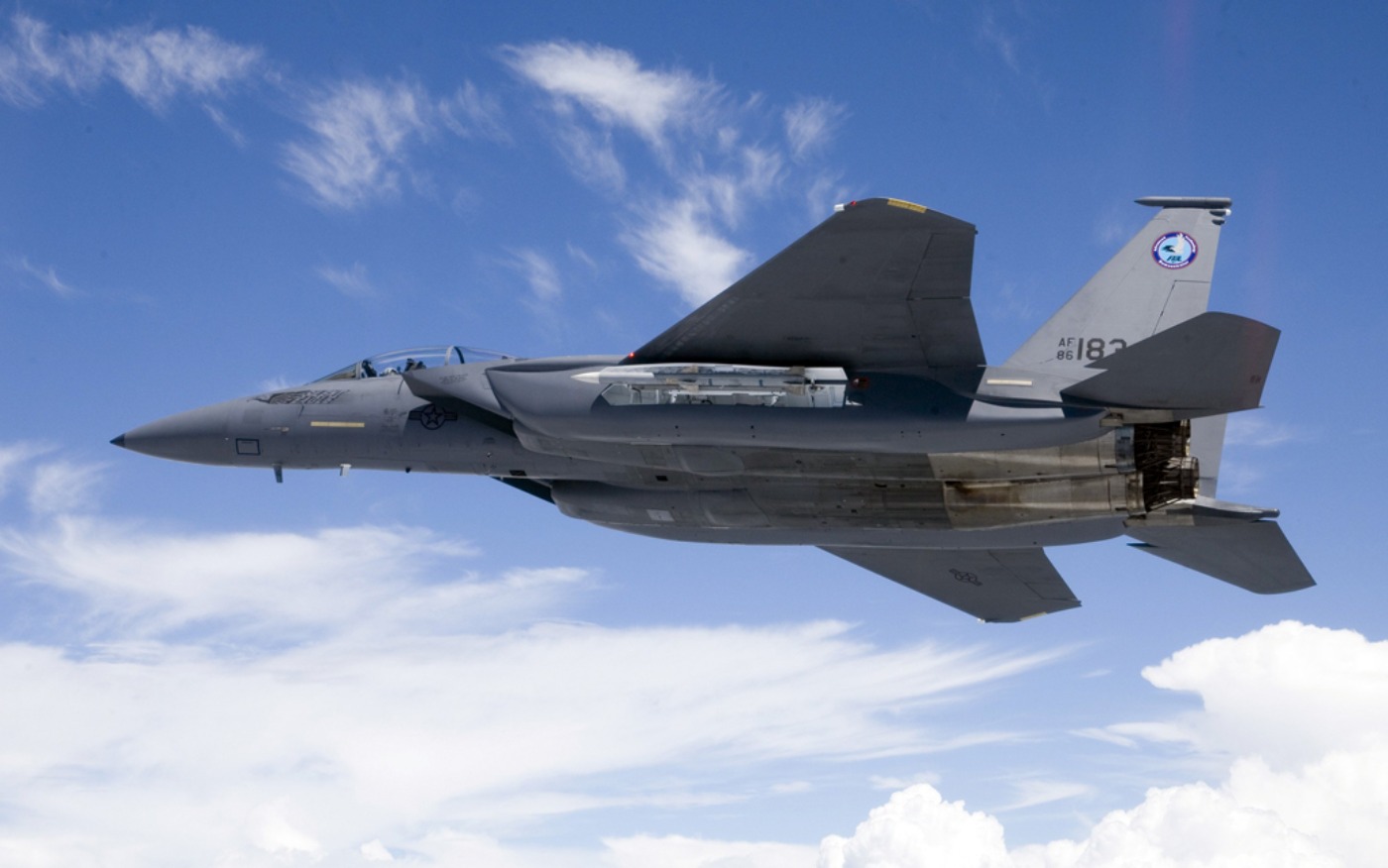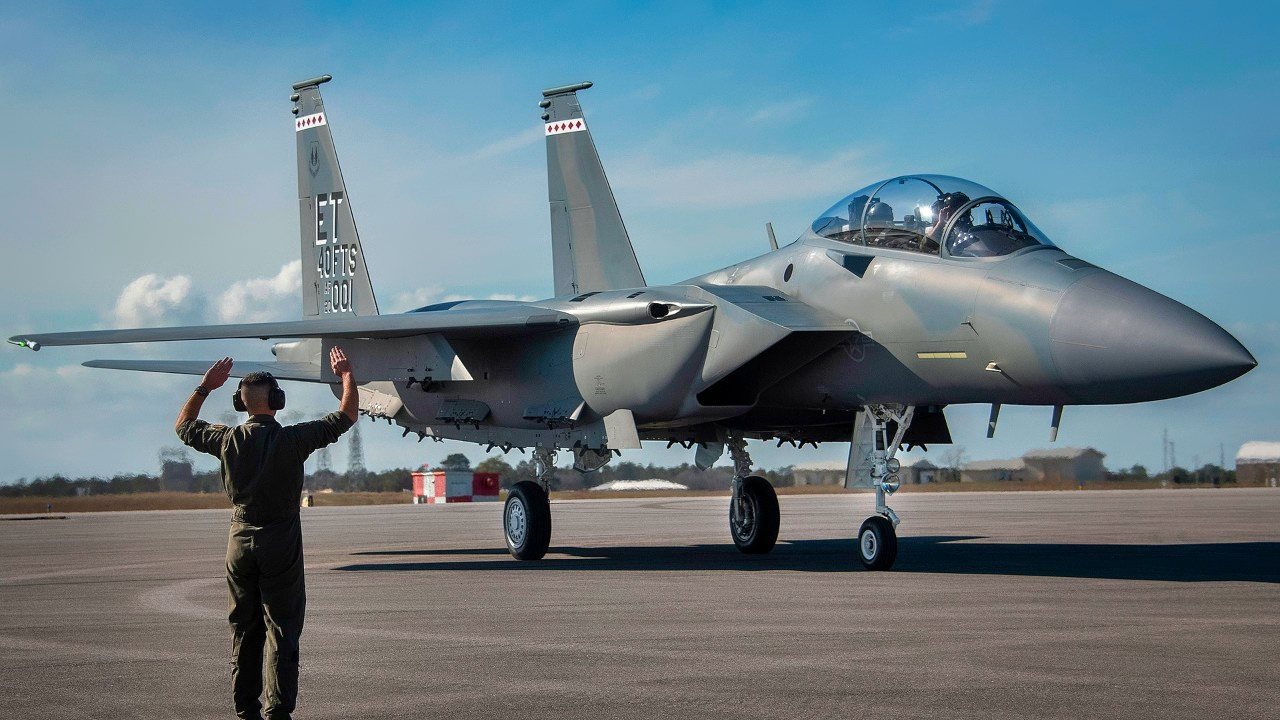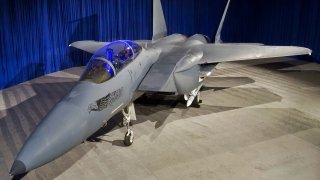A 'Failed' Stealth F-15 Is A Big Reason the F-15EX Eagle II Flies Today
The F-15EX Eagle II, America's newest advanced fighter, owes its origins to the F-15SE Silent Eagle, a "fourth-generation-plus" design conceived as a stealthier evolution of the F-15. The F-15SE featured radar-absorbent materials and internal weapons bays, drawing on stealth capabilities usually found in fifth-generation jets.
What You Need to Know: The F-15EX Eagle II, America's newest advanced fighter, owes its origins to the F-15SE Silent Eagle, a "fourth-generation-plus" design conceived as a stealthier evolution of the F-15. The F-15SE featured radar-absorbent materials and internal weapons bays, drawing on stealth capabilities usually found in fifth-generation jets.

-Although it never moved beyond the design phase due to the focus on fifth-generation fighters like the F-35, the Silent Eagle's innovations heavily influenced the F-15EX.
-With enhanced range, payload, and survivability, the F-15EX incorporates many F-15SE features, making it a cost-effective solution for modern air superiority without the steep costs of fifth-generation platforms.
Origin Story: How the F-15SE Silent Eagle Inspired the F-15EX Eagle II
America’s newest variant of its ubiquitous F-15, the F-15EX Eagle II, is quickly garnering media attention for its enhanced capabilities. Seen as an attempt to offer next-generation capabilities without the costs of the fifth-generation warplanes in America’s arsenal, few people likely realize that the F-15EX’s origins goes back much farther in the annals of American aerospace history.
In fact, there is one particular model of the F-15 that never quite took off in terms of interest, but serves as the progenitor for the F-15EX Eagle II.
I give you the F-15SE “Silent Eagle.” This bird was meant to link the F-15’s popular capabilities and marry it to a stealth capability that, until recently, had been lacking in America’s fourth-generation warplane fleet. This proposed bird was cut down before it could even fly because of the introduction of the fifth-generation warplane.
The F-15SE Silent Eagle
The F-15SE “Silent Eagle” was birthed at a time when America’s defense contractors were competing to see whether the military would buy the fifth-generation warplanes (notably the F-35) or if they’d want simply an augmented fourth-generation plane. The F-15SE was an augmented fourth-generation bird.

The Air Force wanted a new air superiority platform that could have a maximum take-off weight of 40,000 pounds and a top speed of Mach 2.5. What’s more, the Pentagon wanted to upgrade the single-engines they had often used in favor of a two-engine paradigm so the proposed F-15SE could handle throttle changes better. McDonnell-Douglas was selected as the designer of the platform.
Just as the F-15EX Eagle II today is now described, the F-15SE was a “fourth-generation-plus” warplane. It had the affordability of a fourth-generation platform but with fifth-generation warplane augmentations—including stealth capabilities. Features usually found on the F-22A Raptor or even the F-35 Lightning II today, were first placed on the F-15SE. The Silent Eagles had radar-absorbent material lining their bodies as well as an internal weapons carriage to cut down on its radar cross-section (enhancing the plane’s stealthiness).
Further, the Pentagon intended for the F-15SE to be an export vehicle. Saudi Arabia and South Korea, longtime traditional US partners, had expressed interest in this platform (at least initially). It is believed that the Silent Eagle was more advanced than many of its competitors at the time of its unveiling, beating out even the Eurofighter Typhoon and Russian Su-35.
The plane, however, never made it beyond the design phase.

The Linkages Between the Silent Eagle and the Eagle II
Although, according to Maya Carlin writing in these pages, “some of [the F-15SE’s] components and designs have been incorporated into the latest F-15 iteration.” Carlin assesses that, “The F-15EX Eagle II can notably shoot farther than any other fighter in the Air Force’s fleet [and it] does not sacrifice payload for survivability, making it the potential new backbone of the service.” Beyond that, the F-15EX Eagle II carries far more armaments than the F-15SE would have (or any other F-15 variant, for that matter).
Still, the fact that the F-15EX Eagle II is basically an upgraded version of the legendary F-15SE Silent Eagle makes the newer F-15 model a very appealing warplane.
About the Author
Brandon J. Weichert, a National Interest national security analyst, is a former Congressional staffer and geopolitical analyst who is a contributor at The Washington Times, the Asia Times, and The-Pipeline. He is the author of Winning Space: How America Remains a Superpower, Biohacked: China’s Race to Control Life, and The Shadow War: Iran’s Quest for Supremacy. His next book, A Disaster of Our Own Making: How the West Lost Ukraine, is available for purchase wherever books are sold. Weichert can be followed via Twitter @WeTheBrandon.


